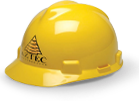Five easy ways to avoid water damage
- Replace old water heaters. Water heaters do damage when they get too old and the tank rusts and bursts, allowing water to pour into adjacent rooms. On average, water heaters last 10 to 12 years. Don’t wait for them to fail; replace your tank once a decade. Today’s energy-efficient systems will also be cheaper to operate.
- Switch to stainless steel hoses: Consider replacing standard rubber or plastic hoses with stainless steel-braided or mesh hoses. Worn out hoses with kinks, cracks or bulges need to be replaced immediately.
- Don’t leave dishwashers and washing machines running if you leave the house. If something breaks while a home owner is away, what could have been a small mop-up job often turns into a thousand-gallon mess best left to professionals.
- Check attic air conditioners and swamp coolers. When attic systems fail, water damages everything that lies below. At least once a year, go up to the attic or roof to check these appliances before they wear out. Look for wear and tear and loose connections — particularly if the unit is mounted on the roof and exposed to sun and rain.
- Consider water alarms: Home owners can install water alarms for a quick alert when an appliance isn’t working right. Hooking up the system to an appliance is usually as simple as hooking up a hose to an outdoor faucet.
Emergency tips
If you discover a build-up of water on the floor, find standing water in your home or experience severe, sudden and accidental water damage, take steps to begin ventilating and drying out your home immediately.
Call Aztec Construction & Restoration FIRST 877.529.8320
- Shut off the water source, if possible. This should be located outside your home near your utility box.
- Move and manipulate all personal property from the origin of loss and surrounding areas to prevent further damages.
- Protect your dwelling from further damage with temporary, reasonable and necessary repairs, like plywood or plastic covers over roof or wall openings, depending on the type of loss. (STOP THE DRIP)
- Move household items to an undamaged area of your home or cover them with plastic. Mop, blot up or wet vac as much water as possible.
- Don’t leave books, magazines or other colored items on wet carpeting. Remove oriental or other colored throw rugs from wet wall-to-wall carpeting. Remove the pad from under saturated carpets Place wood blocks or aluminum foil between furniture legs and wet carpeting.
- Wipe excess water from wood furniture. Open drawers and cabinets to aid in faster drying. Open windows to speed drying.
- Turn on the air conditioner or fans for maximum drying in hot weather, as long as it’s safe for you to use electricity.
- Make small holes in sagging ceilings to get rid of trapped water. Be sure to put a pan or bucket below to catch the water before you make a hole. And don’t turn on a ceiling fixture if the ceiling is wet – don’t mix water and electricity!
- Remove any insulation that is wet and have it replaced with new, dry insulation.
- If you find or discover MOLD, leave it ALONE and DO NOT TOUCH IT. If possible cover it with plastic and seal all edges to prevent spores from becoming airborne.
- Finally photograph everything as it happens, documentation will prevail.
- Once you have all of this in place a call into your insurance agent informing them of this loss. Be prepared to document your claim number as well if you have the name of your adjuster. This information will be helpful during this process.


